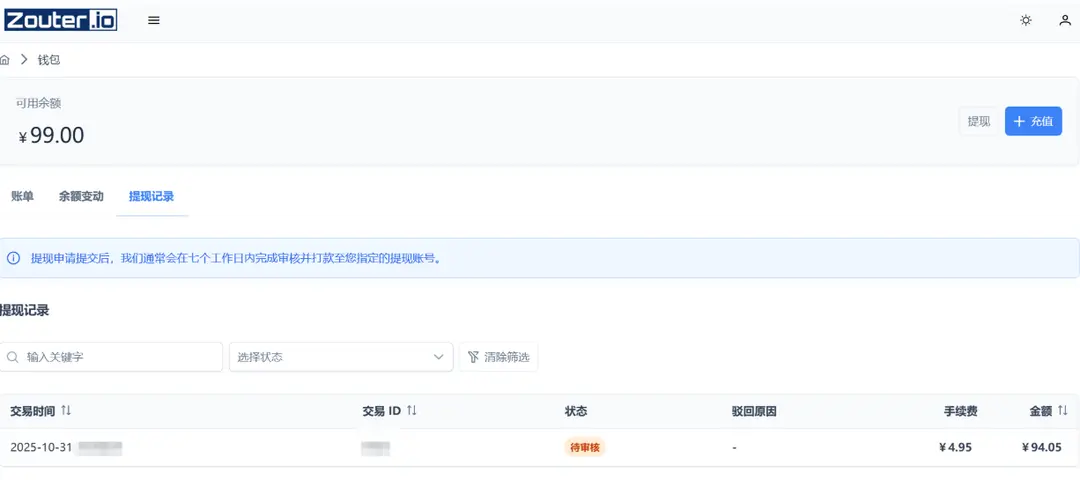October Musings: My First 100,000+ Read WeChat Article

This article primarily explores updating a Hugo blog via email and the feasibility of using GitHub issues as a publishing platform for Hugo blogs. It also shares experiences from writing a WeChat public account article with over 100,000 reads and discusses the use of a new VPS provider, Zouter.
Exploring Various Hugo Publishing Techniques
Updating a Static Blog’s Musings Page via Email
Lawtee started using GitHub issues as a personal updates publishing platform for his blog two months ago, with automatic synchronization to his Hugo blog. The method involves monitoring changes to a specific GitHub issue page and syncing them to the Hugo blog. However, after some use, it proved slightly cumbersome:
- Mobile Browser: Editing could lead to accidental page refreshes or network issues causing failures.
- GitHub App: Multiple clicks were required to access the issue comment function.
After a month-long hiatus due to infrequent updates, Lawtee revisited the setup and discovered that GitHub’s email notifications could be leveraged. By enabling “Include your own updates” in GitHub account settings, comments on his own issues would trigger emails. Replying directly to these emails pushes content to the issue, achieving Hugo page updates.
Testing revealed a persistent issue with images in email-published GitHub issues; manual editing of image links via a gallery was necessary, adding inconvenience.
Quickly Posting Updates to GitHub Issues via Mobile
After some experimentation, two main methods emerged:
- Mobile Browser: Appending the anchor
#:~:text=Add%20a%20commentto the issue URL auto-focuses the comment box on page load, though it may fail if the page loads slowly. - GitHub App + Shortcut Marker: Using Shortcut Marker to create an issue link allows one-tap access to the app, where adding content requires just two clicks.
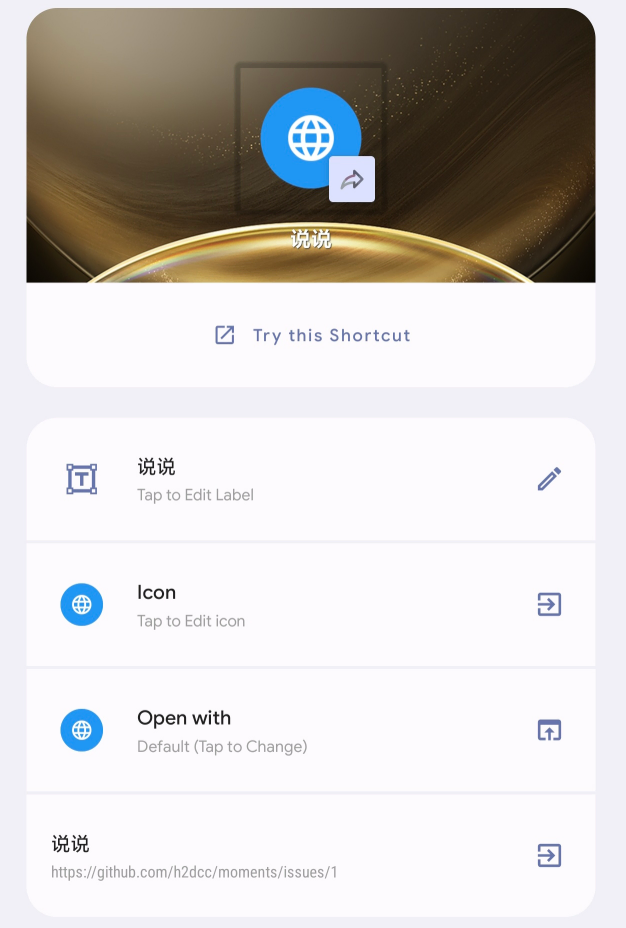
Feasibility Study: Using GitHub Issues as a Hugo Blog Publishing Platform
Using the GitHub app to update Hugo musings has been convenient and reliable, sparking the idea of extending this to full blog posts.
Key technical challenges to address:
Extracting issue content and converting it to Markdown files: Focus on transforming the frontmatter, including categories, tags, and permalinks. Permalinks might use time-based naming (to avoid Chinese characters affecting aesthetics), categories could be determined by specific issue labels, and tags could also be derived from issue labels post-categorization.
Image conversion: This is trickier, involving two types:
- Cover images: Conflicts with the current Hugo template; extracting images from specific positions in the issue may cause duplicates in the Hugo post, necessitating removal after image extraction.
- In-content images: May require a Python component to transfer images from GitHub’s default gallery to the repository in the same directory as the Markdown file.
Synchronization and build strategies: Handling issue modifications, deletions, drafts, and errors during extraction and conversion. Given the infrequency of mobile app posts, a “one-time” publishing approach might be preferred, with subsequent edits made directly to the Markdown files rather than the issue.
Parenting Anecdotes
Attending My Daughter’s Parent-Teacher Conference
Just a month and a half into the semester, my daughter’s homeroom teacher changed again. During summer break, it was announced that her previous teacher had been promoted, and a new teacher from a top local school was brought in. However, within a month, that teacher resigned, forcing the school to reinstate the original homeroom teacher. The main issue was students “testing” the new teacher, leading to noticeable declines in classroom discipline and academic performance in just a few weeks.
As the school leads in district rankings for exams and advancement, teachers work extremely hard, often from 7 AM to midnight. The current homeroom teacher became emotional during discussions, expressing disappointment over the recent class situation.
During the conference, various subject teachers communicated with parents, but opinions varied widely—some wanted accelerated learning, reduced non-core class time, and more pressure on students, while others advocated for less homework and shorter hours. With reports of parents in other classes resorting to legal or administrative measures over minor issues, teachers are walking a tightrope.
Overall, this conference felt heavier than previous ones, highlighting the significant shift from grades 1-3 to fourth grade. It may be time to adjust my laid-back parenting approach and collaborate more closely with the school.
The Amusing Yet Frustrating “Sunshine Coins” in Elementary School
Last night, my son’s teacher announced that first graders could use “Sunshine Coins” (a school currency) to shop at a “Sunshine Market” today. When I mentioned it, his playful mood turned to tears.
He had already spent all his coins—not through school channels, but by trading them for snacks and toys with classmates. He even admitted owing two coins to his piano teacher for chatting during lessons.
This left him broke and unable to participate, so I suggested borrowing from his sister (both refused), earning coins by helping the teacher (uncertain), or charging “rent” for his toy eraser (the friend was also broke). Finally, I calmed him by proposing he bring small toys from home to sell to coin-rich classmates.
This morning, in the rush, he forgot the toys and cried all the way to school, refusing to go. After explaining to the teacher, she agreed to reward him for good behavior in class today, which finally convinced him to enter.
Like Father, Like Son: Both Are Big Spenders
Following the “Sunshine Coins” saga, I asked my son about his day.
He had virtually sold two “bamboo dragonfly” toys for 29 coins to a classmate, promising delivery tomorrow. With an additional 10 coins from his teachers, he had 39 coins to spend at the market.
He bought an eraser for 2 coins, a pencil for 5, and two packs of “shrimp snacks” for 10. When asked about the remaining coins, he reluctantly revealed:
He gave 1 coin to his “big client” as a reward for their purchase. Then, after finishing his snacks, he bought more at 1 coin for three “shrimp snacks,” spending all 21 remaining coins. Orz, what a spendthrift!
Later, I opened Douyin and was shocked: Valve’s update to CS2 skin crafting rules now allows five red gun skins to craft knife and glove skins—previously high-end items costing thousands or even tens of thousands of RMB—causing prices to crash.
As a “plain skin” player, I had bought two knife skins, the cheapest being a “Gut Knife” for 624 RMB on NetEase Buff, now down about 200 RMB. My son’s spending spree wasn’t far off!
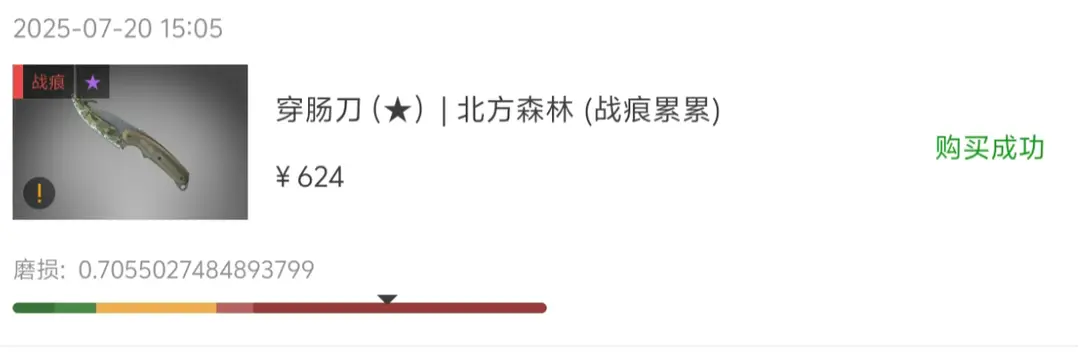
What Is Socialism?
Before bed, my daughter asked two profound questions: why English is the most widely spoken language and what socialism is.
The first was easier to explain, but socialism required a simplified approach. I started with the Age of Exploration, the Industrial Revolution, the rise of British capitalism, and the British Empire, then moved through historical production relations up to classical Marxist theory. An hour later, she seemed to grasp the concepts, thanks to real-world examples.
Life Snippets
My First 100,000+ Read WeChat Article
After National Day, I wrote a piece on “intercity buses,” expecting a few thousand reads. To my surprise, it went viral. By noon, it had 99,800 reads, and I eagerly refreshed until it hit 100,000—the threshold for displaying “100,000+” (it shows “100,000” at exactly 100,000 reads and “100,000+” at 100,001).
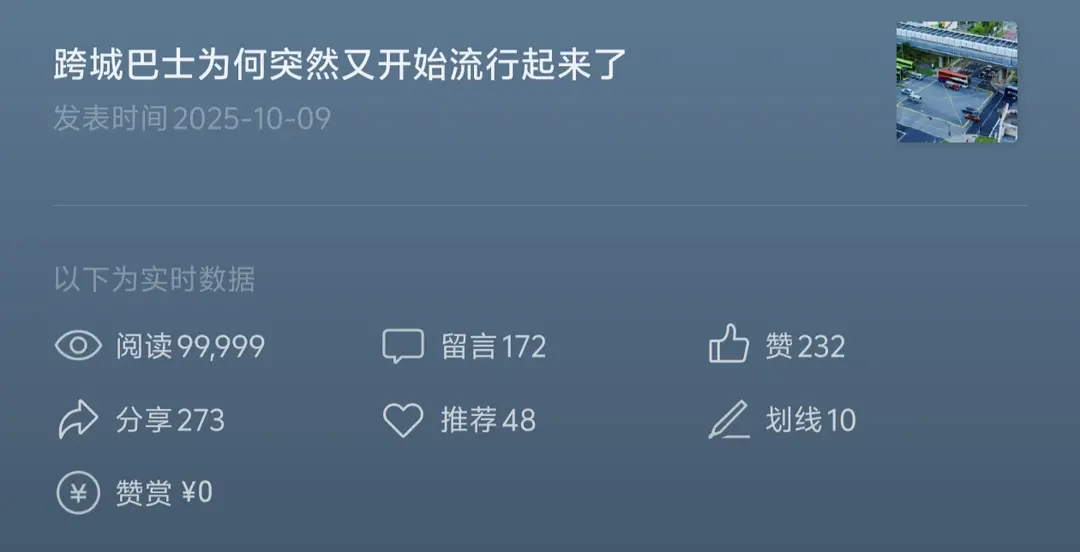
Failed to Recover Flickr Account, Found a 2006 Love Letter to My Wife
While discussing lost images from my WordPress days stored on Flickr, I tried recovering my account registered with a defunct @yahoo.com.cn email.

Checking the Alibaba Cloud邮箱 it was migrated to, I stumbled upon a love letter I wrote to my wife in 2006. Time flies!
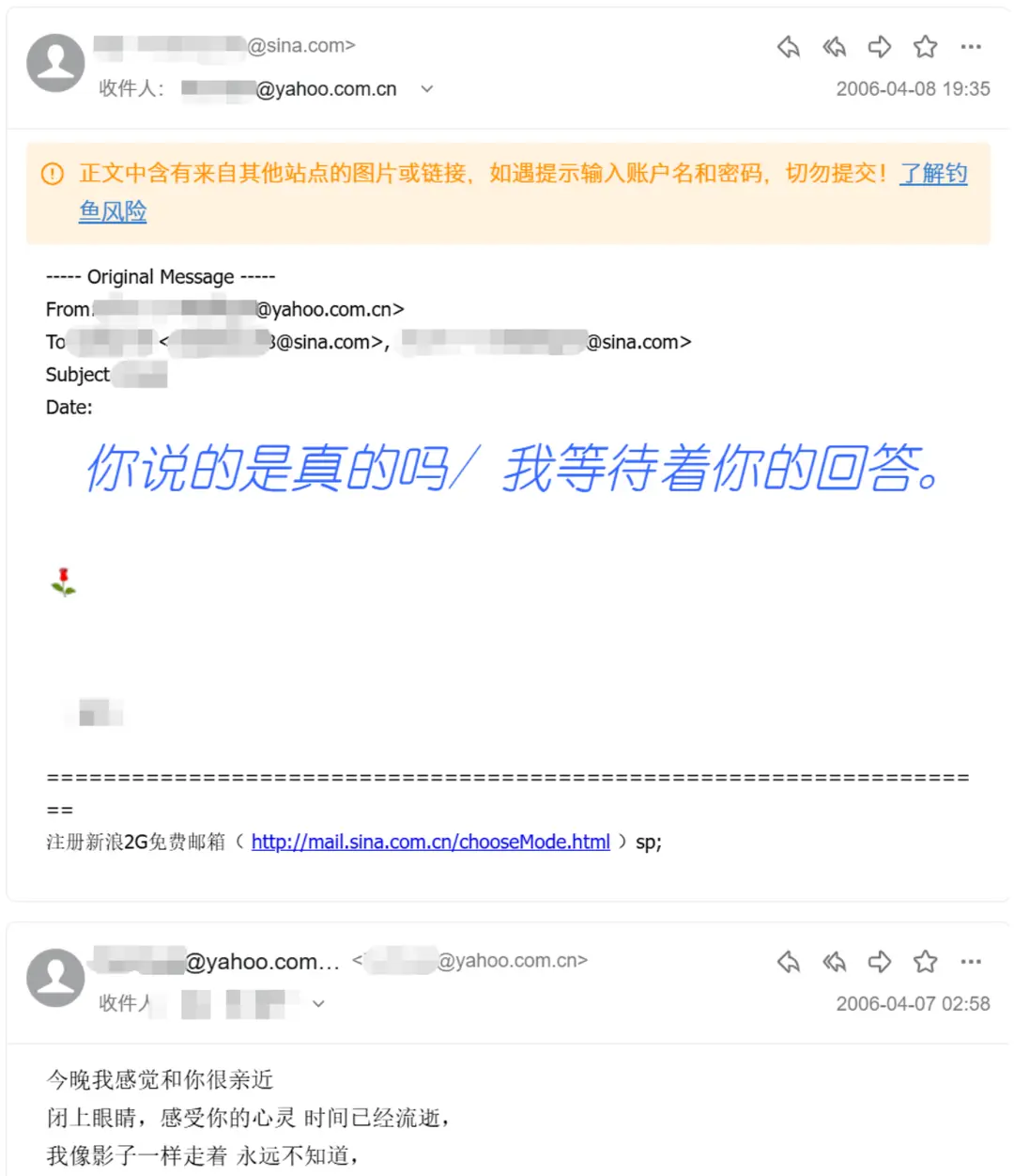
VPS Tinkering
Blog Server Testing
My blog is currently hosted on Claw JP (Alibaba Cloud Japan), with decent speed. However, as the $7/year promotional plan is expiring and not worth renewing, I’m seeking new hosting.
Testing during Saturday night peak hours revealed:
- Vercel: Generally stable nationwide, with some areas unable to connect.
- Cloudflare: More disconnections than before, but decent speed where accessible; slow image loading persists.
- Netcup: Reliable nationwide, though slow in some areas due to the German server location.
- Oracle Singapore: Good speed in South China, slower in the north, with some disconnections.
- Oracle India: Overall slow, with more disconnections on AMD than ARM.
- Vimiss HK (not pictured): Optimized for mobile, slow and unstable for Unicom/Telecom.
Conclusion: If no good Black Friday deals emerge, I’ll use Vercel primarily, supplemented by Netcup for areas with poor Vercel performance.

Zouter VPS: Another Lesson from the ISP
Seeing Zouter VPS’s ad for a 1000Mbps, 2TB/month Hong Kong server at 99 RMB/year, I checked reviews—it was a “mobile joy” machine with sub-20ms ping in Guangdong. Many users claimed it as their main server, so I ordered.
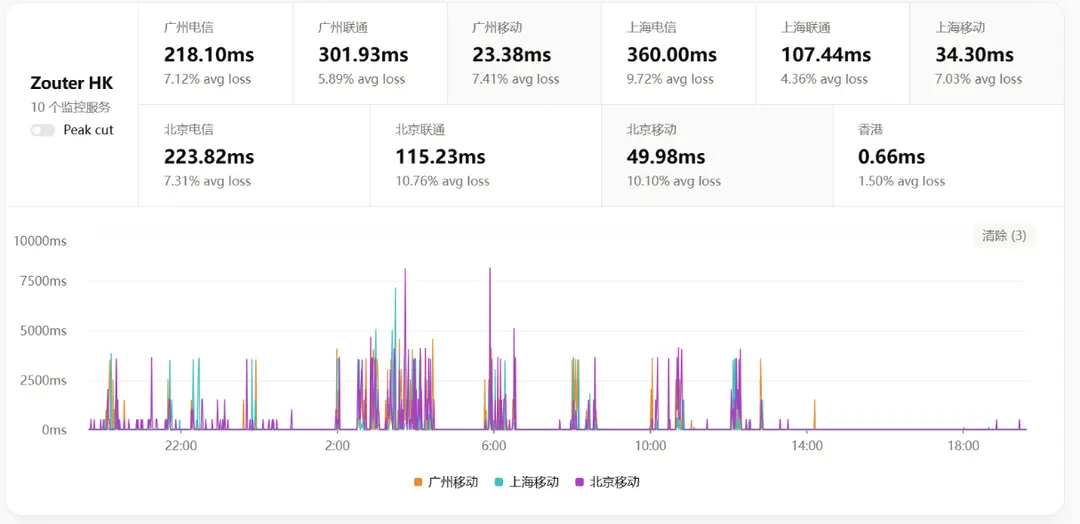
Unexpectedly, download speeds capped at 1-2 Mbps.

After verifying settings and BBR, testing from an Oracle Singapore server showed 600 Mbps speeds—confirming my local mobile ISP’s QOS throttling.

Further forum searches revealed others had reported this issue days earlier. I quickly wiped the disk, requested a refund, and learned a 5 RMB lesson.
